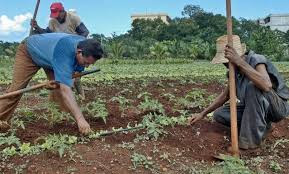College of Marin is a local community college that offers agricultural majors as an option. They teach sustainable methods of farming and how to obtain a farm. The College of Marin is proud to be 80% solar powered with solar panels on all of their campuses. Their farm is home to all kinds of fruits and vegetables. They have an orchard where they grow numerous variety's of fruits and olives. Everything they do includes the least amount of waste and emissions. The program is run by volunteers who have a lot of experience in the agriculture industry. I was very impressed by the enthusiasm the volunteers had for working on the farm. Coming from a paid job, managing a hundred acre farm, it may be difficult to adapt to a volunteering job.
If you are interested in the agriculture industry and are eager to learn more then the College of Marin is the place for you. You have to be willing to put in the work, and enjoy being outside enough that your willing to let it be your classroom.
-Hunter Bueman

 On Friday the 15th. Both sustainable agriculture classes attended a field trip at Indian Valley Campus Organic Farm and Garden. Here we engaged in numerous activities to help the farm and its members out. One of the most unique and applicable moments for our class was the process of making organic soil. We used different soil amendments such as perlite, peat moss, vermiculite and compost. We then sifted these ingredients through a table to create a refined soil. This contrasted our farm we have back at Redwood, although we do partially make our soil by using our own compost, we tend to use pre made soil. So being able to see the full process was very insightful, and is something we can take away and add to our inventory of methods. In addition to the soil amending we also engaged in Mulching.
On Friday the 15th. Both sustainable agriculture classes attended a field trip at Indian Valley Campus Organic Farm and Garden. Here we engaged in numerous activities to help the farm and its members out. One of the most unique and applicable moments for our class was the process of making organic soil. We used different soil amendments such as perlite, peat moss, vermiculite and compost. We then sifted these ingredients through a table to create a refined soil. This contrasted our farm we have back at Redwood, although we do partially make our soil by using our own compost, we tend to use pre made soil. So being able to see the full process was very insightful, and is something we can take away and add to our inventory of methods. In addition to the soil amending we also engaged in Mulching. 





